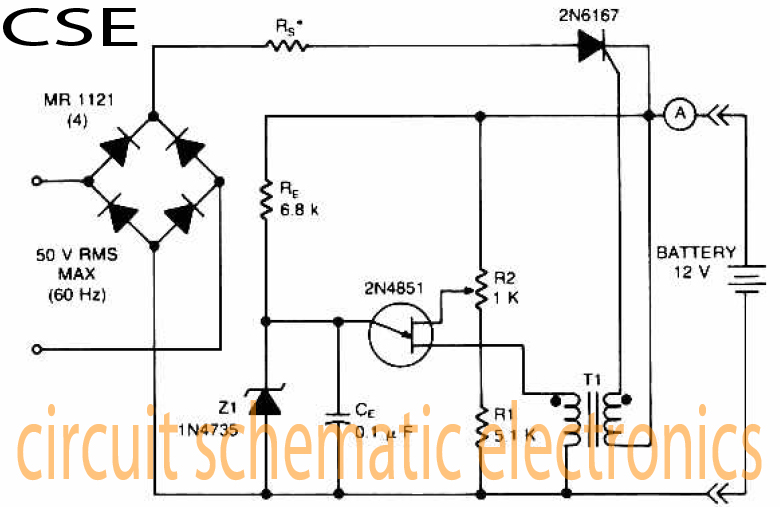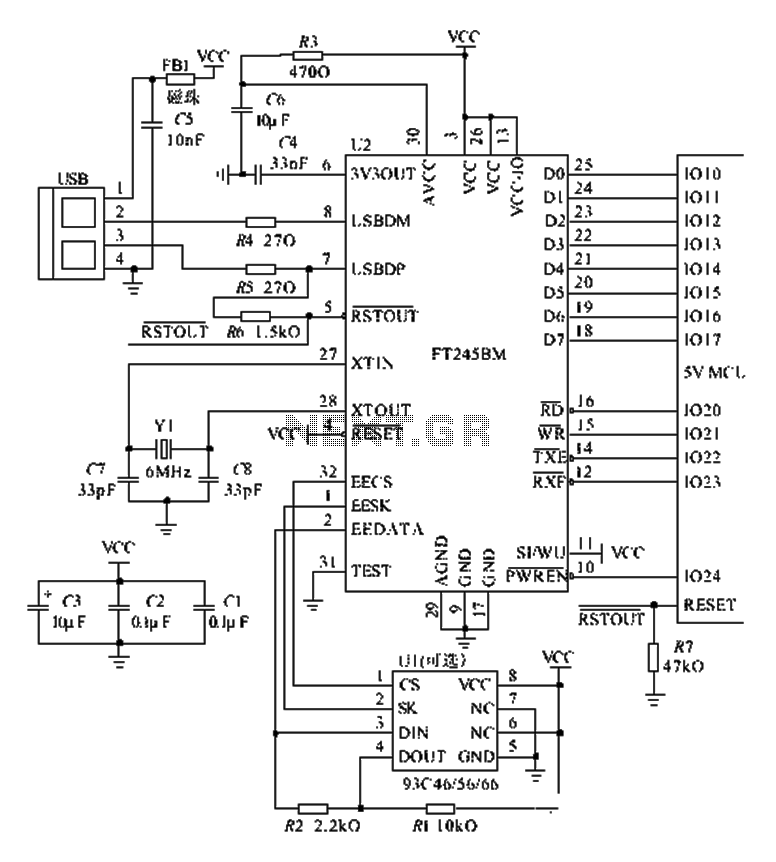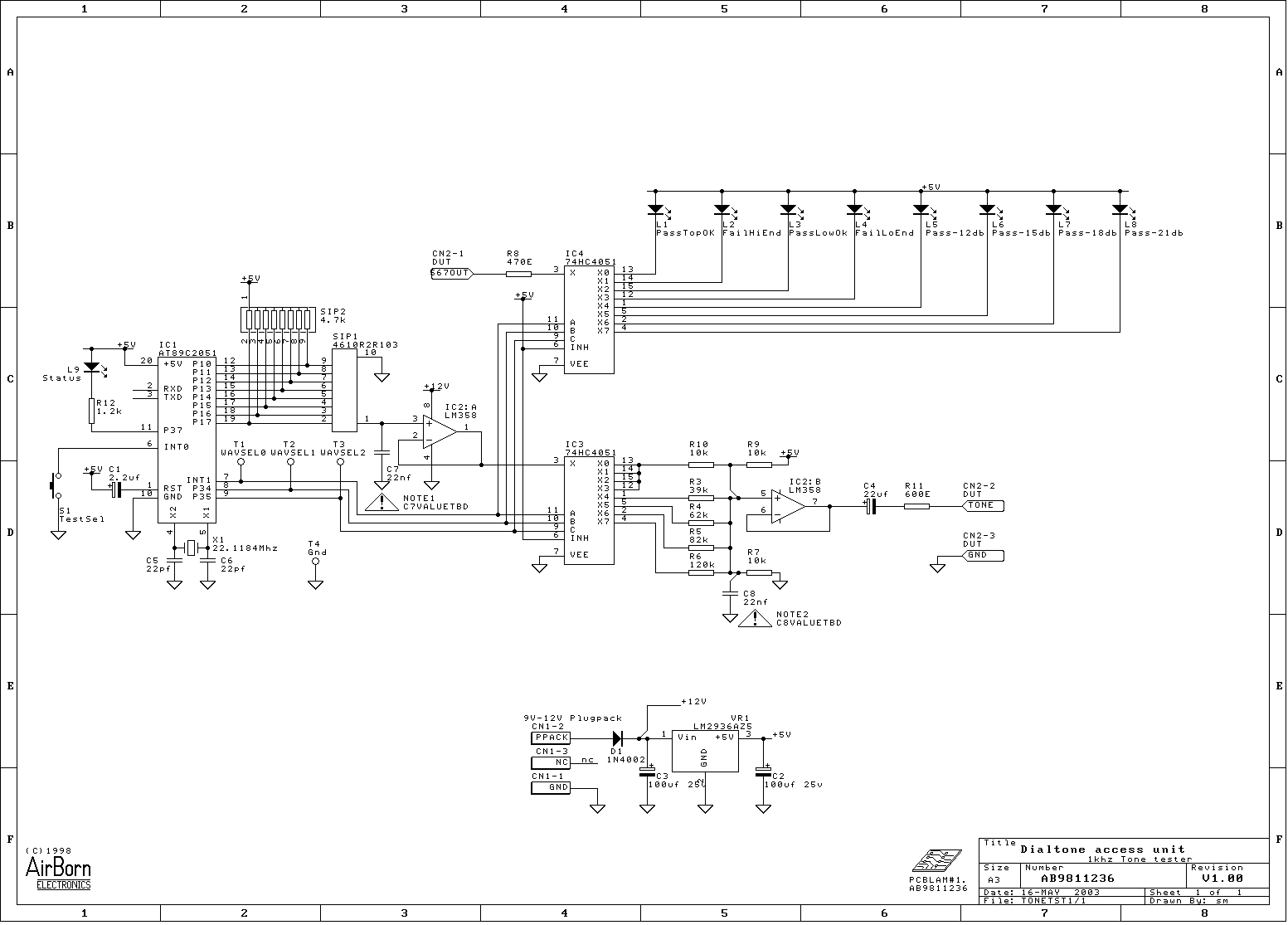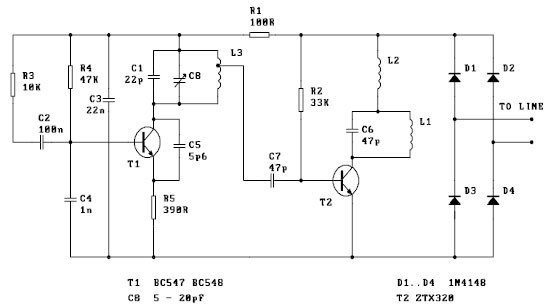
Variable charger circuit Schematic Diagram

The accumulator charger circuit must provide a voltage that matches the specifications of the batteries being charged. For a 12-volt accumulator, the output voltage should not exceed 12 volts, nor should it fall significantly below this threshold. Failure to maintain the appropriate voltage can lead to rapid damage to the batteries. To ensure the correct charging voltage, a voltage control circuit is incorporated to assist in regulating the voltage.
The accumulator charger circuit is designed to deliver precise voltage levels suitable for charging batteries, particularly 12-volt models. The key component of this circuit is a voltage regulator, which stabilizes the output voltage and prevents it from exceeding the battery's rated voltage. This is crucial as overcharging can lead to battery degradation or failure.
The circuit typically consists of a transformer that steps down the mains voltage to a lower AC voltage suitable for charging. This AC voltage is then rectified using diodes to convert it into DC voltage. A smoothing capacitor may be used to reduce voltage ripple, providing a more stable DC output. The voltage regulator, which can be a linear regulator or a switching regulator, ensures that the output remains within the safe charging range for the accumulator.
Additionally, a feedback mechanism is often implemented to monitor the output voltage continuously. This feedback loop allows for dynamic adjustments to the regulator, maintaining the output voltage at the desired level. Some designs may incorporate an LED indicator to signal when the charger is active and functioning correctly.
Safety features such as fuses or circuit breakers may also be included to protect against overcurrent conditions, while thermal protection mechanisms can prevent overheating of components. Overall, the accumulator charger circuit is a critical component in battery management systems, ensuring longevity and reliability of rechargeable batteries.Indeed the accu charger circuit, the voltage required must be in accordance with voltage batteries, such accu 12 volts the the output voltage should not be above 12 volts and 12 volts should not be too down. If it does not comply with the required voltage, it will make the batteries or accu quickly broken. But not to worry to find the right vol tage to charge to accu, the voltage control circuit is equipped to facilitate in determining the voltage. 🔗 External reference
The accumulator charger circuit is designed to deliver precise voltage levels suitable for charging batteries, particularly 12-volt models. The key component of this circuit is a voltage regulator, which stabilizes the output voltage and prevents it from exceeding the battery's rated voltage. This is crucial as overcharging can lead to battery degradation or failure.
The circuit typically consists of a transformer that steps down the mains voltage to a lower AC voltage suitable for charging. This AC voltage is then rectified using diodes to convert it into DC voltage. A smoothing capacitor may be used to reduce voltage ripple, providing a more stable DC output. The voltage regulator, which can be a linear regulator or a switching regulator, ensures that the output remains within the safe charging range for the accumulator.
Additionally, a feedback mechanism is often implemented to monitor the output voltage continuously. This feedback loop allows for dynamic adjustments to the regulator, maintaining the output voltage at the desired level. Some designs may incorporate an LED indicator to signal when the charger is active and functioning correctly.
Safety features such as fuses or circuit breakers may also be included to protect against overcurrent conditions, while thermal protection mechanisms can prevent overheating of components. Overall, the accumulator charger circuit is a critical component in battery management systems, ensuring longevity and reliability of rechargeable batteries.Indeed the accu charger circuit, the voltage required must be in accordance with voltage batteries, such accu 12 volts the the output voltage should not be above 12 volts and 12 volts should not be too down. If it does not comply with the required voltage, it will make the batteries or accu quickly broken. But not to worry to find the right vol tage to charge to accu, the voltage control circuit is equipped to facilitate in determining the voltage. 🔗 External reference





